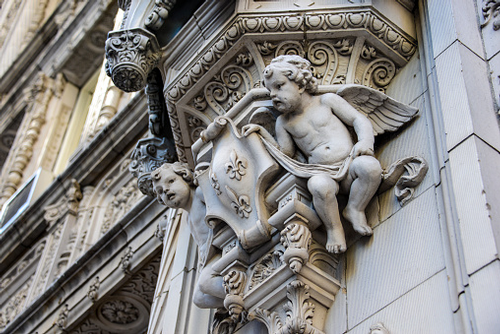THURSDAY, AUGUST 20, 2020
Earlier this year, the New York City Department of Buildings adopted a new rule to its Facade Inspection and Safety Program that made changes to inspection and reporting requirements, commonly known as Local Law 11.
The changes included:
Some highlights of the new rule are as follows.
QEWI Standards
In past cycles, the QEWI responsible for facade inspection and report filing needed to be a registered design professional with at least one year of relevant experience.

 |
| Jonathan Barbour / Getty Images |
|
Earlier this year, the New York City Department of Buildings adopted a new rule to its Facade Inspection and Safety Program that made changes to inspection and reporting requirements, commonly known as Local Law 11. |
Now, a QEWI must have seven years of experience, specifically with facades more than six stories. Those applying for QEWI status now must provide a detailed résumé and demonstrate familiarity with codes, laws and rules pertaining to facades.
In addition, a QEWI can no longer delegate the inspection to tradesmen and technicians; only architects, engineers and individuals with a bachelor’s degree in architecture or engineering and three years of FISP experience—or those without a degree who have at least five years of FISP experience—can perform inspection tasks, and then only under a QEWI’s direct supervision.
Close-Ups
Previously, close-up inspection from scaffolding or other platforms was required for “a representative sample” of the exterior wall (minimum one physical examination), as determined by the QEWI.
The rule now specifies that close-up inspections must be performed at least every 60 feet along the length of every exterior wall fronting a public right-of-way. The rule also stated unequivocally that the use of drones or photography could not take the place of hands-on inspection.
However, more recently, New York City Council has ordered the DOB to study the safety and feasibility of permitting drones to augment facade inspections, coming with a goal to cut costs.
Cavity Wall
The new rule says that starting this cycle, and in every odd-numbered cycle after, probes must be performed on all cavity wall construction. At a minimum, a probe must be completed along each required close-up inspection interval, with the QEWI ultimately determining the number, size and location of the probes to best identify the condition and spacing of wall ties.
Exceptions to this requirement include: buildings that underwent cavity wall rehabilitation within the past 10 years; new buildings less than 10 years old for which evidence of wall tie installation is provided; or buildings for which an alternative method of evaluating wall ties is proposed by the QEWI and accepted by the DOB.
New Reports
The examination report now must specify not only the age and type of construction, but also “all materials present in the exterior wall,” which could prove a challenge. The rule provides specific distress conditions to be described in the report, ranging from cracking and displacement to loosening of metal anchors and water infiltration, and now requires the location diagram to include dimensions for each facade elevation.
All significant conditions must now be documented with photographs that are mapped to key plans, elevations and locator drawings. In addition to this, an exact date by which the work must be completed must also be specified.
Penalties
Failing to file an acceptable inspection report now means a civil penalty of $5,000. Owners who file late incur a penalty of $1,000 per month.
In addition, owners who fail to correct unsafe conditions are liable for a $1,000-per-month penalty, plus a monthly fine for each linear foot of sidewalk shed, starting at $10 per linear foot of shed per month after the first year, and increasing each year thereafter, up to $40/lf/month in year five.
Failing to correct a SWARMP condition from the previous cycle now carries a penalty of $2,000.
The rule does, however, provide penalty waivers for when a state of emergency prevents inspections, reports or corrections.
Tagged categories: Building Envelope; Building facades; Facade Maintenance Design; Inspection; Laws and litigation; Regulations